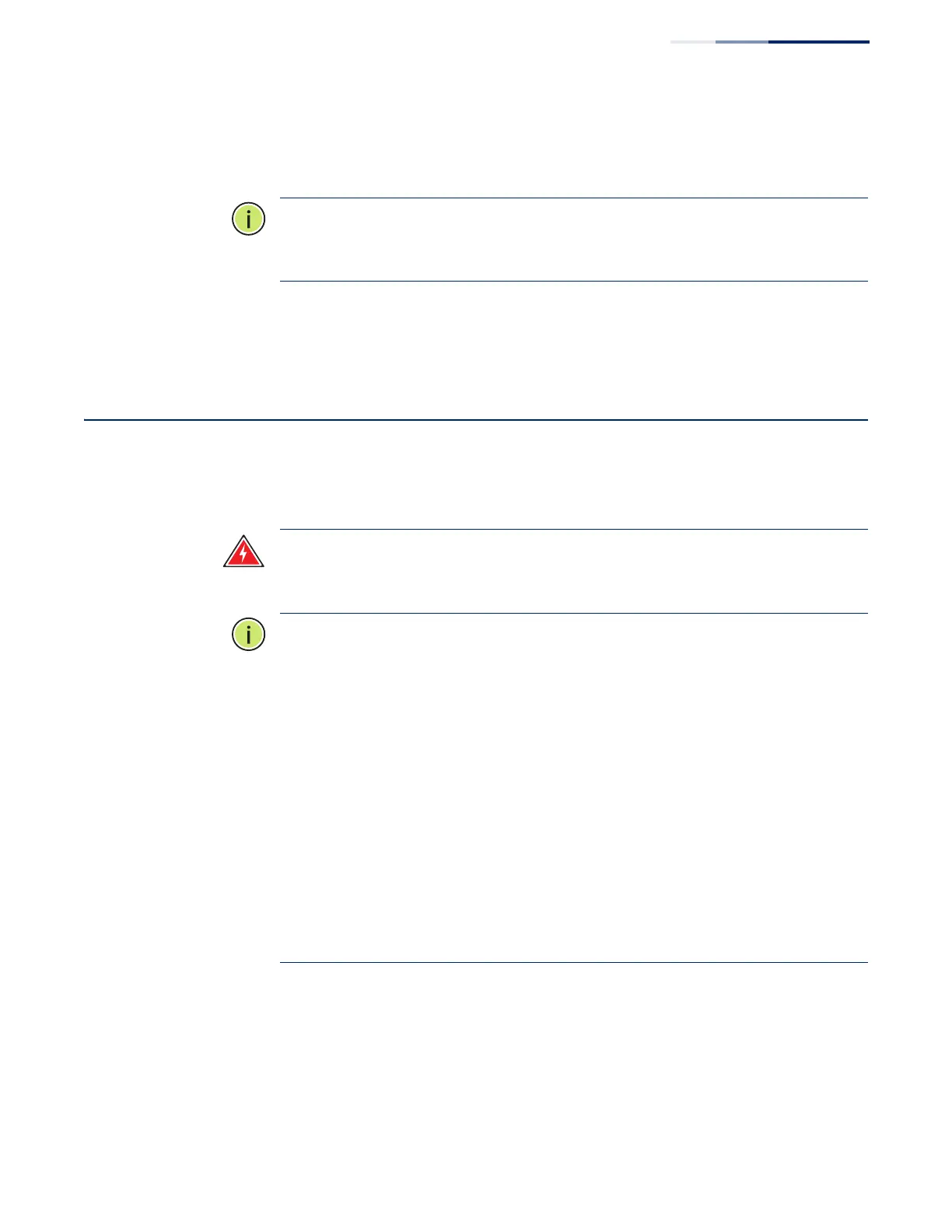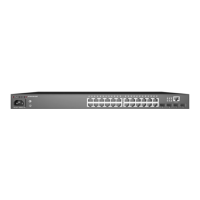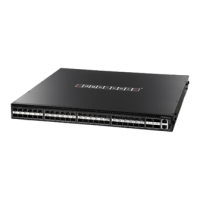Chapter 4
| Power and Grounding
How to Connect to DC Power
– 35 –
2. Insert the plug on the other end of the power cord directly into the AC input
socket on the back of the switch.
Note:
If your country’s AC power outlet standards do not match the power plug of
the included AC power cord, you will need to change the AC power cord. You must
use a cord set that has been approved for the socket type in your country.
3. Check the LED indicators on the switch front panel as the unit is powered on to
verify that power is being received. If not, recheck the power cord connections
at the AC supply source and back panel power input connector.
How to Connect to DC Power
When using DC power, an external DCpower supply circuit must be connected to
the DC power connector.
Warning:
Before wiring the DC plug or connecting power to the switch, ensure
that power to the feed lines is turned off at the supply circuit breaker or
disconnected from the power bus.
Note:
1+1 redundancy is a system where a switch power supply is backed up by
another switch power supply in a load-sharing mode. If one power supply fails, the
other power supply takes over the full load of the switch.
Note:
To provide adequate circuit protection between the DC power supply and
the switch, all intermediate wiring and circuitry should be rated to carry a load at
least two times the maximum rating for this switch, as described in Table 2, “AC
Power Supply Specifications,” on page 32.
Note:
The wiring between the DC power supply and the switch must be stranded
copper wire within the range of 10 to18 AWG.
Note:
Wiring for the power input terminals on the switch are described below.
Wiring of the DC power supply terminals depends on the equipment in use at the
local site, but should be wired in such a way as to meet the input requirements
shown in Figure 21 on page 36. The wiring should also be color coded according to
local standards to ensure that the input power and ground lines can be easily
distinguished.

